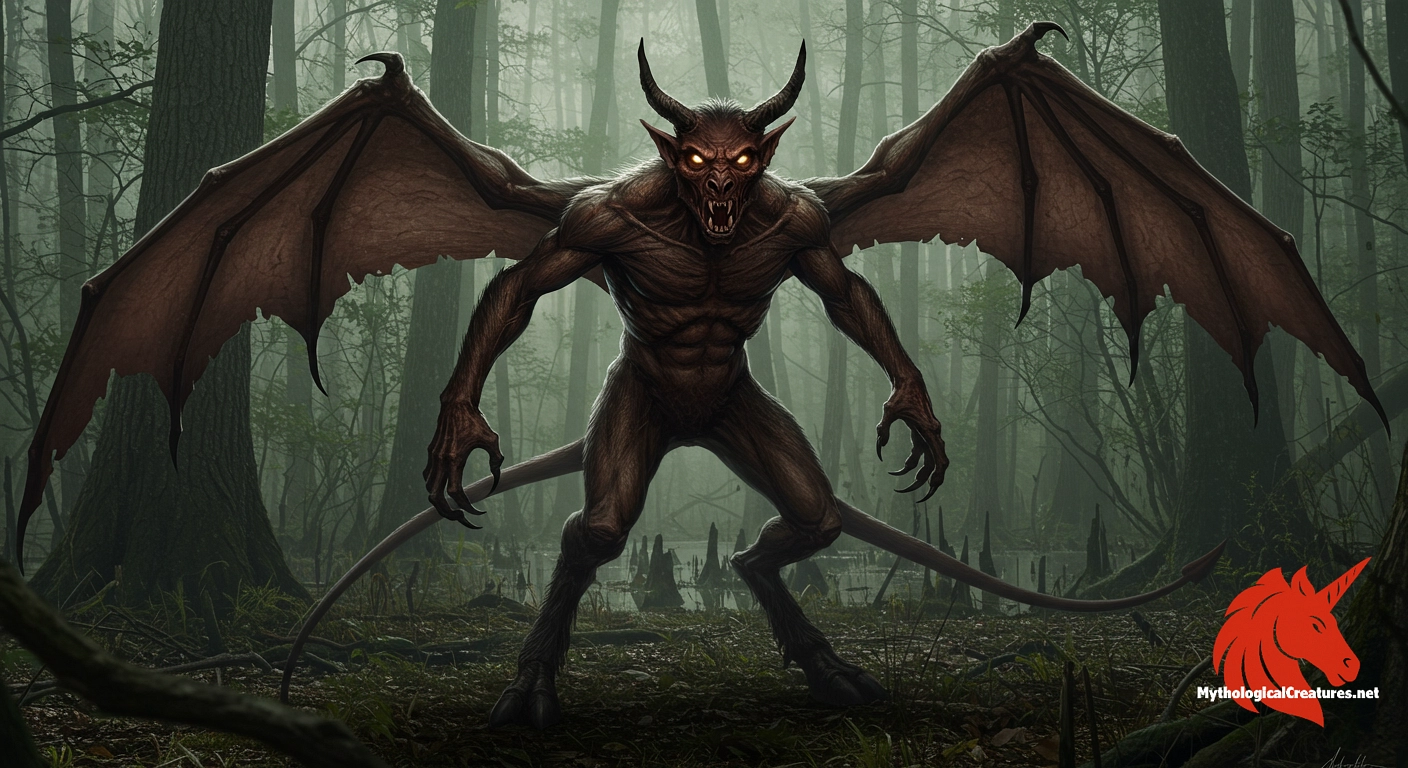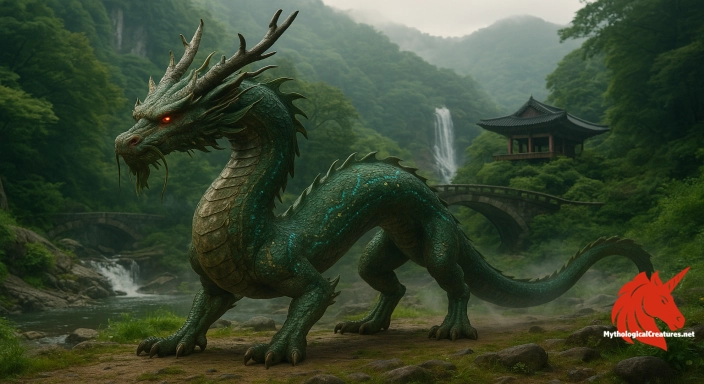Jersey Devil: The Jersey Devil is a legendary creature from South Jersey folklore.

Jersey Devil
Jersey Devil - A cultural icon that has become synonymous with mystery and terror in South Jersey.
Origins & First Encounters
The Jersey Devil has long captivated the imagination of residents in South Jersey and beyond, emerging from the mists of early American lore as a creature of both malediction and mystery. Its origins are entwined with the dark narratives of colonial times, where stories of curses and supernatural births took root in isolated communities. A notorious legend, it is said to have been born as the thirteenth child of a cursed family, an event that marked the beginning of its fearsome reputation. Over time, the creature’s tale became a central element of local folklore, embodying the anxiety and superstition that characterised early frontiers. Early accounts mingled the supernatural with everyday life, making the Jersey Devil a symbol of the unknown dangers lurking in the vast Pine Barrens. Its narrative not only provided a basis for cautionary tales but also became a topic of communal identity in the region. The legend, continuously evolving, reflects both the harsh realities of early American wilderness and the human tendency to explain the inexplicable through myth. Community retellings have shaped the creature into an emblem of both terror and fascination. Thus, the Jersey Devil serves as a window into a past where myth and reality merged in the collective consciousness of local inhabitants.
Source Texts & Tale Variants
The lore of the Jersey Devil has been preserved through a myriad of storytelling traditions, ranging from early colonial manuscripts to modern local newspaper reports. Folk families in the Pine Barrens recounted sightings and eerie sounds passed down through generations, each adding distinctive details to the legend. Diverse sources include farm diaries, oral testimonies, and even regional compilations of supernatural events. Some accounts detail an origin steeped in a dark familial curse, while others present it as an entirely self-contained spectral menace. Early records intermingle with sensational 20th-century press reports that amplified the creature’s notoriety. Variations of the story found in local folklore have offered alternate descriptions of its behaviour and appearance, demonstrating the fluid nature of myth. Written records, though often fragmentary, have been pivotal in preserving the creature’s narrative for future scrutiny. As folklore enthusiasts and regional historians continue to probe these sources, the Jersey Devil’s story grows richer and more complex. The eclectic range of accounts has ensured that the creature remains a vibrant part of local cultural heritage.
Form & Powers
The Jersey Devil is often depicted as a bizarre and terrifying fusion of various animalistic and supernatural traits. Its body is typically described as elongated and wiry, a shape that enhances its uncanny, almost otherworldly quality. Exhibiting a bipedal stance reminiscent of a kangaroo or a wyvern, the creature combines human and animal traits in a disturbingly seamless manner. The head is rendered with features that evoke both goat and horse, complete with menacing horns that arch upwards in a defiant display. Large, leathery wings, akin to those of a bat, extend impressively from its back and suggest an ability to soar silently through the night. Its slender arms, ending in clawed hands, contrast sharply with powerful legs capped by cloven hooves, contributing to its unpredictable gait. An elongated, forked tail further accentuates its demonic silhouette and adds to the eerie balance of its form. The overall visual impression is one of a creature born from nightmare, where each anatomical detail blurs the line between the natural and the supernatural. This composite appearance continues to evolve as different witnesses interpret its features through the lens of local myth and personal fear.
Regional Faces
Regional interpretations of the Jersey Devil display an intriguing array of local flourishes and adaptations that highlight the cultural diversity of the area. In the heart of South Jersey, where the dense Pine Barrens provide a perfect backdrop for mysterious encounters, the creature is often seen as an omen of misfortune. In nearby Philadelphia, urban legends have merged with rural myth to portray a version of the beast that is as enigmatic as it is multifaceted. Some communities emphasise its role as a protector of hidden, ancient lands, while others recount terrifying encounters that leave little doubt about its malevolent nature. Local variations also appear in descriptions, with some witnesses noting more pronounced features such as exaggerated wingspans or a particularly grotesque facial structure. This regional variation extends to the creature’s reported behaviour, with certain areas attaching greater symbolic meaning to its high-pitched shrieks and ghostly speed. Towns and localities tailor the tale to their unique historical and social contexts, thereby nurturing a diverse palette of myth. Despite these differences, consistent elements of the legend—its cursed birth, hybrid anatomy, and mysterious aura—bind all accounts into a coherent narrative. Such regional adaptations underscore how folklore can be both a unifying and a distinctly local phenomenon.
Cultural Parallels
The legend of the Jersey Devil occupies a distinctive niche within the broader context of folklore and myth, drawing intriguing parallels with other hybrid creatures of legend. Its composite anatomy resonates with similar beings in European and Native American mythologies, where the blending of animal traits often symbolises the liminal space between nature and the divine. Much like the European wyvern or dragon, the Jersey Devil exhibits characteristics that combine martial prowess with supernatural dread. It also finds echoes in American cryptid legends such as the Mothman, both appearing as harbingers of unexplained phenomena and foreboding events. Comparatively, the creature shares the eerie quality of entities like the Chupacabra, invoking both fear and fascination through its inexplicable origins. These creatures, though born of different cultural soils, underline a universal human tendency to warn against and mythologise the unstable boundaries of the natural world. The ways in which these legends overlap offer valuable insights into the shared symbolism of transformation, curse, and the unpredictability of existence. Each narrative, while unique in its setting and details, contributes to an international mosaic of folklore that challenges terrestrial logic. In synthesising these cultural parallels, one finds that the Jersey Devil is not just a local monster, but part of a wider tradition of myth-making that spans continents and centuries.
Legacy & Modern Evolution
The historical evolution of the Jersey Devil myth reflects a dynamic interplay between age-old superstition and modern reinterpretation. Early settlers wove the creature’s tale into the fabric of their daily lives, attributing unexplained occurrences in the wilderness to its malevolent influence. Over time, as the legend absorbed local colour and contemporary embellishments, it transitioned from a mere ghost story into a symbol of regional identity. In the modern era, the creature has transcended its status as an ominous figure to become a cultural icon featured in festivals, art, and local tourism. Media portrayals, ranging from film to literature, have ensured that the Jersey Devil continues to capture the public imagination, often reimagined to reflect societal fears and fascinations. Contemporary depictions soften some of its more terrifying aspects while emphasising its mysterious allure and historical roots. Modern reinterpretations have even elevated the myth to a subject of playful local pride, where the creature is celebrated in creative and commercial endeavours alike. This ongoing reinvention highlights the adaptability of folklore, illustrating how ancient legends can evolve to remain relevant in new cultural landscapes. Ultimately, the Jersey Devil stands as a testament to the enduring power of myth, merging the eerie legacy of the past with the creative spirit of the present.
Interesting Fact
Also known as the Leeds Devil, the Jersey Devil has inspired a wide range of cultural references and remains a staple of American cryptid lore.
For serious myth projects
Feature your work alongside the legends
From academic works to story-rich games, we highlight projects that respect world mythologies. Talk to us about a measured, long-term placement.
Start a conversationQuick Creature Info
Origin:
Our Mythic Legendary Rating:

Also Sometimes Known As:
Habitat:
Supernatural Powers:
Physical Attributes:
Abilities:
Behavior:
Lore:
Related Creatures, Tales or Lore
- MMothman
- CChupacabra
- WWendigo
References
Discover Another Mythical Legend You May Not Have Heard Of?
Uncover the mysteries of ancient folklore and expand your knowledge of legendary beings from cultures around the world.
Dare to Meet the Korean dragon....
Curated by the Mythological Creatures Team
Series editor: Mythological Creatures Directory
Primary desk: Americas & Indigenous Traditions Desk
(rev. November 2025)
